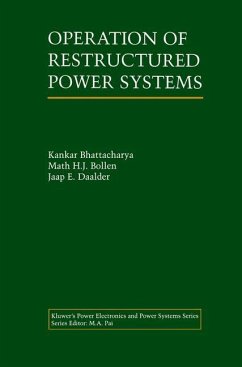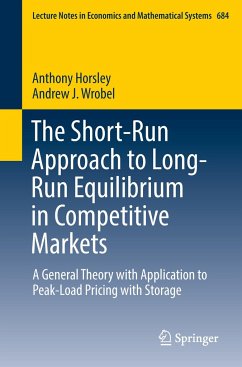
Valuation, Hedging and Speculation in Competitive Electricity Markets
A Fundamental Approach
Versandkostenfrei!
Versandfertig in 6-10 Tagen
76,99 €
inkl. MwSt.
Weitere Ausgaben:

PAYBACK Punkte
38 °P sammeln!
The challenges currently facing particIpants m competitive electricity markets are unique and staggering: unprecedented price volatility, a crippling lack of historical market data on which to test new modeling approaches, and a continuously changing regulatory structure. Meeting these challenges will require the knowledge and experience of both the engineering and finance communities. Yet the two communities continue to largely ignore each other. The finance community believes that engineering models are too detailed and complex to be practically applicable in the fast changing market environ...
The challenges currently facing particIpants m competitive electricity markets are unique and staggering: unprecedented price volatility, a crippling lack of historical market data on which to test new modeling approaches, and a continuously changing regulatory structure. Meeting these challenges will require the knowledge and experience of both the engineering and finance communities. Yet the two communities continue to largely ignore each other. The finance community believes that engineering models are too detailed and complex to be practically applicable in the fast changing market environment. Engineers counter that the finance models are merely statistical regressions, lacking the necessary structure to capture the true dynamic properties of complex power systems. While both views have merit, neither group has by themselves been able to produce effective tools for meeting industry challenges. The goal of this book is to convey the fundamental differences between electricityand other traded commodities, and the impact these differences have on valuation, hedging and operational decisions made by market participants. The optimization problems associated with these decisions are formulated in the context of the market realities of today's power industry, including a lack of liquidity on forward and options markets, limited availability of historical data, and constantly changing regulatory structures.












